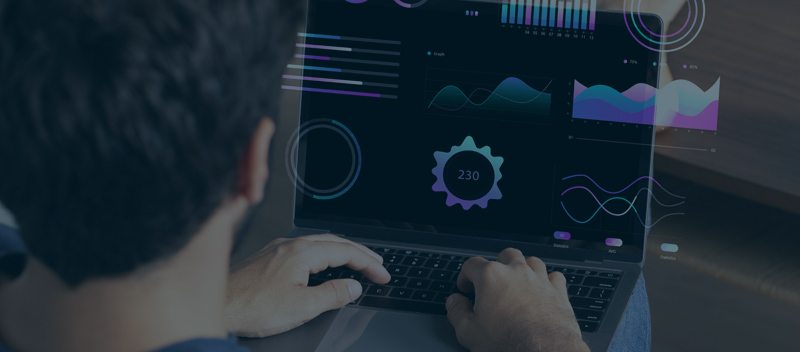Blog Real-Time Compliance Visibility: The Power of Compliance Monitoring Tools
Real-Time Compliance Visibility: The Power of Compliance Monitoring Tools

Compliance monitoring is crucial for organizations to ensure they meet industry standards and avoid penalties. Traditional compliance monitoring methods, such as manual audits and periodic assessments, are often cumbersome and prone to errors. These methods can lead to significant gaps in compliance, exposing organizations to risks and inefficiencies.
By leveraging real-time compliance monitoring solutions, organizations can achieve unparalleled visibility, proactively manage risks, and ensure regulatory adherence with accuracy and efficiency. These tools not only streamline processes but also enhance the organization’s overall resilience in evolving regulatory landscapes.
Understanding Compliance Monitoring Tools
Compliance monitoring tools are essential technologies designed to help organizations ensure they meet regulatory standards and industry requirements. These tools provide continuous compliance monitoring, enabling real-time visibility and management of compliance-related activities.
Core Functionalities of Compliance Monitoring Tools
Compliance monitoring tools offer a range of functionalities that are critical for maintaining regulatory adherence:
-
- Automated Auditing: Streamlines the process of auditing by automatically collecting and analyzing data.
- Real-Time Alerts: Provide immediate notifications about compliance breaches or potential risks.
- Reporting and Analytics: Generate detailed reports and insights to facilitate informed decision-making.
- Policy Management: Helps in creating, updating, and enforcing compliance policies across the organization.
Types of Compliance Monitoring Tools
There are various types of compliance monitoring tools tailored to specific needs:
-
- Security Compliance Tools: Focus on ensuring that security measures and protocols are in line with regulatory standards.
- Regulatory Compliance Tools: Designed to help organizations adhere to industry-specific regulations, such as GDPR, HIPAA, and more.
- Industry-Specific Tools: Customized solutions for specific industries, such as finance, healthcare, or manufacturing, addressing unique compliance requirements.
For more on our customized compliance services, Talk to an Expert today
The Importance of Real-Time Compliance Monitoring
Real-time compliance monitoring has become indispensable for organizations striving to maintain compliance and mitigate risks. This approach offers numerous benefits that traditional methods simply can’t match.
Benefits of Real-Time Visibility into Compliance Status
Real-time compliance monitoring provides organizations with instantaneous insights into their compliance status. This continuous visibility is crucial for several reasons:
- Immediate Detection: Identifies compliance issues as they occur, allowing for prompt action.
- Enhanced Accuracy: Reduces the likelihood of human error associated with manual audits.
- Efficiency: Streamlines compliance processes, saving time and resources.
Prevention of Compliance Breaches
Real-time monitoring acts as a proactive measure to prevent compliance breaches. By utilizing automated compliance monitoring tools, organizations can:
- Receive Real-Time Alerts: Immediate notifications about potential compliance violations enable swift corrective actions.
- Monitor IT Systems: IT compliance monitoring ensures that all digital systems and processes adhere to regulatory standards.
- Continuous Assessment: Ongoing evaluation of compliance metrics helps in maintaining consistent adherence to regulations.
Role in Risk Management
Compliance monitoring plays a critical role in an organization’s risk management strategy. Here’s how:
- Risk Identification: Early detection of potential risks allows for timely mitigation.
- Policy Enforcement: Ensures that compliance policies are consistently applied and updated as needed.
- Reduced Penalties: By maintaining real-time compliance, organizations can avoid costly fines and reputational damage.
Key Features of Compliance Monitoring Tools
Compliance monitoring tools are equipped with a range of advanced features designed to help organizations maintain regulatory adherence and operational efficiency.
Automated Data Collection and Analysis
Automated data collection and analysis are fundamental to compliance monitoring tools. This feature allows for:
- Data Aggregation: Seamless collection of data from various sources, ensuring comprehensive coverage.
- Efficiency: Reduces the manual effort involved in data gathering, freeing up resources for other critical tasks.
- Accuracy: Minimizes the risk of human error, ensuring precise and reliable data analysis.
Real-Time Reporting and Dashboards
Real-time reporting and dashboards provide instantaneous insights into compliance status. Key benefits include:
- Instant Visibility: Access to up-to-date compliance metrics at a glance.
- Customizable Dashboards: Tailor reports and dashboards to meet specific regulatory requirements and organizational needs.
- Informed Decision-Making: Real-time data supports timely and informed decision-making processes.
Anomaly Detection and Alert Generation
Identifying and addressing anomalies is crucial for maintaining compliance. This feature offers:
- Proactive Monitoring: Continuous surveillance to detect deviations from standard compliance practices.
- Immediate Alerts: Instant notifications of potential compliance breaches, enabling quick response.
- Risk Mitigation: Early detection of anomalies helps prevent compliance issues from escalating.
Integration with Existing Systems
Integration with existing systems such as Security Information and Event Management (SIEM) and Security Orchestration, Automation, and Response (SOAR) platforms enhances the functionality of compliance monitoring tools:
- Seamless Workflow: Ensures smooth data flow and interoperability between systems.
- Comprehensive Coverage: Extends monitoring capabilities across various platforms and applications.
- Enhanced Security: Integrates security measures with compliance protocols for robust protection.
Remediation Guidance and Workflow Automation
Effective compliance monitoring tools provide remediation guidance and workflow automation to address compliance issues efficiently:
- Guided Remediation: Step-by-step instructions to resolve compliance violations, ensuring consistent and accurate responses.
- Automated Workflows: Streamlines the process of addressing compliance issues, reducing response time and effort.
- Efficiency: Enhances operational efficiency by automating repetitive tasks and processes.
By leveraging these key features, organizations can ensure continuous compliance, mitigate risks, and enhance overall operational effectiveness.
Selecting the Right Compliance Monitoring Tool
Here are key factors to consider when selecting a compliance monitoring tool:
-
- Industry-Specific Requirements: Ensure the tool you select is tailored to meet the specific compliance needs of your industry, whether it’s healthcare, finance, or another sector.
- Scalability: Your chosen tool should handle increasing volumes of data and adapt to evolving compliance requirements without compromising performance.
- Cost: Evaluate the total cost of ownership, including initial purchase, implementation, and ongoing maintenance.
- User-Friendliness: The tool should be easy to use, with intuitive interfaces that require minimal training for your staff.
- Integration Capabilities: Ensure the tool can seamlessly integrate with your existing systems, such as SIEM and SOAR platforms.
Importance of Vendor Evaluation and Due Diligence
Conducting thorough vendor evaluation and due diligence is crucial to ensure you select a reliable and effective compliance monitoring tool. Key steps include:
-
- Research and Reviews: Investigate potential vendors thoroughly by reading customer reviews, case studies, and industry reports.
- Vendor Reputation: Choose vendors with a proven track record and strong reputation in the industry.
- Support and Training: Assess the vendor’s customer support and training offerings. Reliable support can make a significant difference in successful tool adoption and operation.
- Compliance Expertise: Opt for vendors who demonstrate deep knowledge and experience in compliance monitoring within your specific industry.
Tips for Successful Tool Implementation
Effective implementation of a compliance monitoring tool is essential for realizing its full benefits. Here are some tips to ensure a smooth and successful implementation:
- Project Planning: Develop a comprehensive project plan that outlines the implementation timeline, milestones, and responsibilities.
- Stakeholder Involvement: Engage key stakeholders from various departments early in the process to ensure their needs and concerns are addressed.
- Pilot Testing: Conduct a pilot test to identify potential issues and gather feedback before full-scale deployment.
- Training and Education: Provide thorough training for all users to ensure they understand how to use the tool effectively.
- Continuous Improvement: Regularly review and update the tool’s configurations and workflows to adapt to new compliance requirements and organizational changes.
The Future of Compliance Monitoring
Here are some emerging trends and technologies shaping the future of compliance monitoring:
- Artificial Intelligence (AI) and Machine Learning (ML): These technologies are revolutionizing compliance monitoring by automating complex tasks, detecting anomalies, and predicting potential compliance issues.
- Blockchain Technology: Blockchain provides an immutable and transparent ledger, making it easier to track and verify compliance-related activities. Its decentralized nature enhances data integrity and security.
- Robotic Process Automation (RPA): RPA can handle repetitive compliance tasks, reducing human error and freeing up resources for more strategic activities.
Integrated Compliance Platforms
These platforms consolidate various compliance functions into a single, cohesive system, enhancing efficiency and accuracy. Key benefits include:
-
- Centralized Data Management: Integrated platforms provide a unified view of all compliance-related data, simplifying reporting and decision-making.
- Enhanced Collaboration: Teams can work together more effectively with access to shared tools and resources.
- Scalability: These platforms can easily adapt to growing regulatory requirements and organizational needs.
Continuous Improvement and Adaptation
Because compliance is dynamic, it is essential to continuously improve and adapt. Organizations must:
-
- Stay Informed: Regularly update policies and procedures to reflect the latest regulatory changes.
- Invest in Training: Ensure that employees are well-versed in new technologies and compliance with requirements.
- Monitor and Evaluate: Continuously assess the effectiveness of compliance programs and make necessary adjustments.
Organizations can stay ahead in compliance monitoring by embracing these emerging trends and technologies and committing to continuous improvement.
Stepping Into Compliance Excellence
Real-time compliance monitoring offers unparalleled efficiency, accuracy, and proactive risk management, allowing organizations to stay ahead of regulatory changes and avoid potential pitfalls.
Partnering with TrustNet ensures access to cutting-edge compliance monitoring tools tailored to your unique needs, fostering trust and reliability in a rapidly evolving landscape.
Ready to enhance your compliance strategy? Partner with TrustNet today. Contact Our Experts now.




